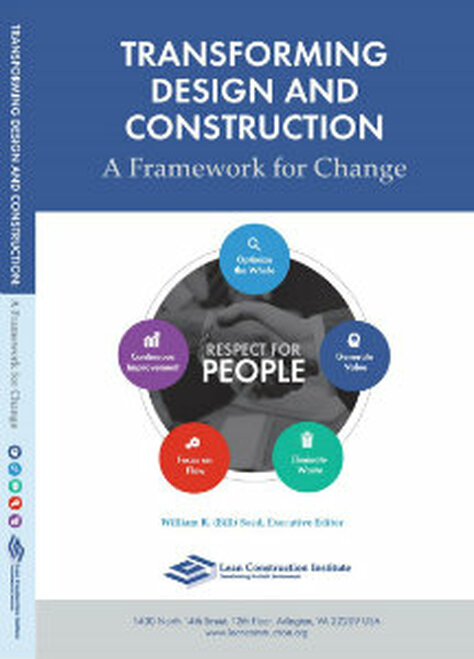PDCA
Introduction to PDCA
A mindset of continuous improvement is a key component to Lean thinking in design and construction. In the world of Lean, we are always aiming to improve the processes we operate by in order to improve the outcome by increasing value and decreasing waste.
Standardization of processes is key to an environment where continuous improvement can occur; without standardized processes, the improvement cycle cannot have as big of an impact since the changes would only be applicable to the processes that abide by that standard.
To improve, teams must be willing to innovate and try new methods, breaking down traditional methods that have existed just because they’re the ways things have always been done. That’s where the PDCA cycle comes in.
What Does PDCA Stand For?
PDCA stands for Plan, Do, Check, Adjust. The cycle was introduced by Walter A. Shewhart and popularized by Dr. W. Edwards Deming as a method of continuous improvement. Originally coined as Plan, Do, Check, Act, the Lean Construction Institute believes “Adjust” to be more appropriate, though “Act” and “Adjust” are sometimes used interchangeably.
What is it?
A Method for Process Improvement
PDCA is a method for guiding team members through the stages of process improvement. PDCA is a Lean take on the Scientific Method, in which one tests a hypothesis to see if the change results in an expected outcome. If the changes did in fact result in the expected outcome, that change is then implemented into the process, which becomes known as the “future state.”
By documenting PDCA cycles, teams are able to record what they’ve learned and pass along those findings to other teams in a project or future projects those team members work on.
With a mindset of continuous improvement, the PDCA process is never-ending; teams should always be seeking ways to improve their processes.
Phase 1: Plan
Decide to make a change in a design and/or construction process. Discuss the idea with the team and document the plan for executing the change.
Planning Phase Questions to Ask
- What are you hoping this change will accomplish?
- Who will carry the change out?
- Who needs to be informed about the planned change?
- What measurements will you use to determine if the change is having the desired impact?
- How long will you try the change before checking the measurements?
Phase 2: Do
Execute the planned change over the predetermined period of time. Be prepared for unexpected bumps along the road and try to start on a smaller scale if you can. Make note of the impact the change is having on the efficiency and productivity of the process involved. Ensure that you are using the same measurements outlined in the “plan” phase.
Phase 3: Check
Once the specified period of time has passed, take time with your team to analyze the results and discuss the change’s short- and long-term impact on the measurements outlined.
Phase 4: Adjust/Act
If the change was successful in improving the measurements outlined, adjust the standard with the change in place, creating a new standardized process. Communicate the new process to team(s) impacted by it in a Daily Huddle or in another group forum to ensure the members implement it. Continue to monitor the process and its outcomes for areas for improvement.
How to Know PDCA is Necessary
If you’re working in design and construction, then the short answer is that PDCA is always necessary. Accepting that no process is perfect is Step 1 to adopting the Lean mindset of continuous improvement. We are always seeking ways to add value and eliminate waste.
In Lean design and construction, we have identified eight different types of waste that are encountered in processes. Those 8 wastes of Lean are:
- Over/Under Production
- Waiting
- Unnecessary Transportation
- Over/Under Processing
- Excess Inventory
- Unnecessary Motion
- Defects
- Unused Creativity of Team Members
When waste is identified in a design or construction process, the team should conduct the PDCA process to eliminate or minimize that waste and increase the value added to the project.
The identification of waste in project processes often occurs through other Lean methods such as Value Stream Mapping, A3 Thinking, and Gemba Walks.
PDCA Lean Tools
Let’s explore some ways in which PDCA thinking can be applied in Lean design and construction.
A3 Thinking
A process improvement technique that provides teams an opportunity to work through a single issue by documenting the PDCA process on a single sheet of A3 paper. The A3 report takes a deeper dive into the PDCA process to guide teams towards an effective countermeasure.
Kaizen
Kaizen is the Japanese term for “continuous improvement.” Kaizen practitioners are encouraged to standardize processes so that the PDCA cycle can occur. The “Kaizen ladder” is an illustration in which several PDCA cycles are stacked on top of one another to signify the continuous and unending cycle of improvement that occurs in Lean thinking.
Gemba Walks
Gemba is another Japanese term, meaning “where the value is added” or “where the work takes place.” A gemba walk occurs when one physically goes to where the work is being done in order to have conversations with those responsible for adding value to the project’s outcome. Upon gathering findings from the gemba walk, the PDCA problem solving cycle can begin in earnest to address issues that were found in the processes being followed.
More Lean Topics
From 5s to IPD, explore popular Lean design and construction topics below.










